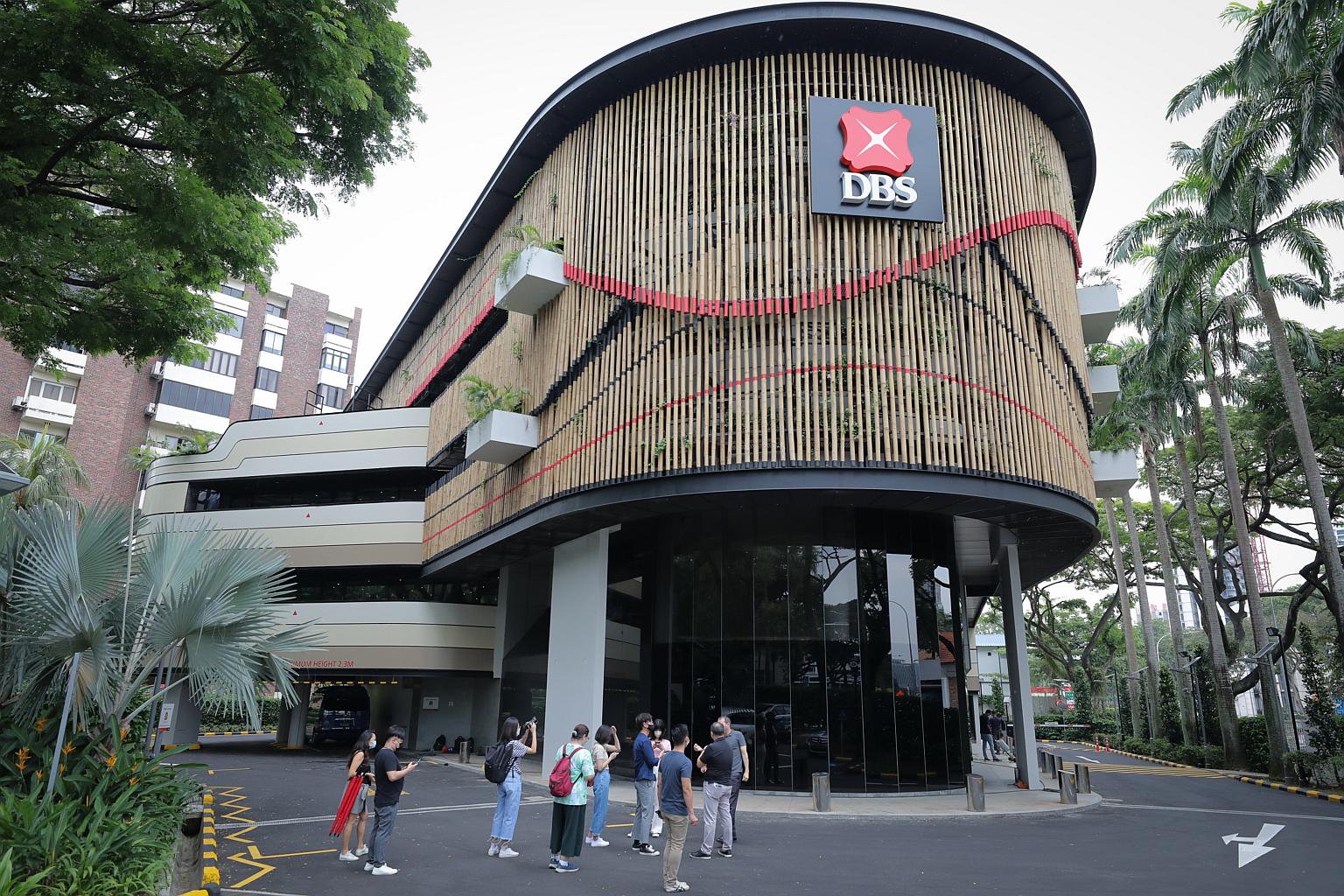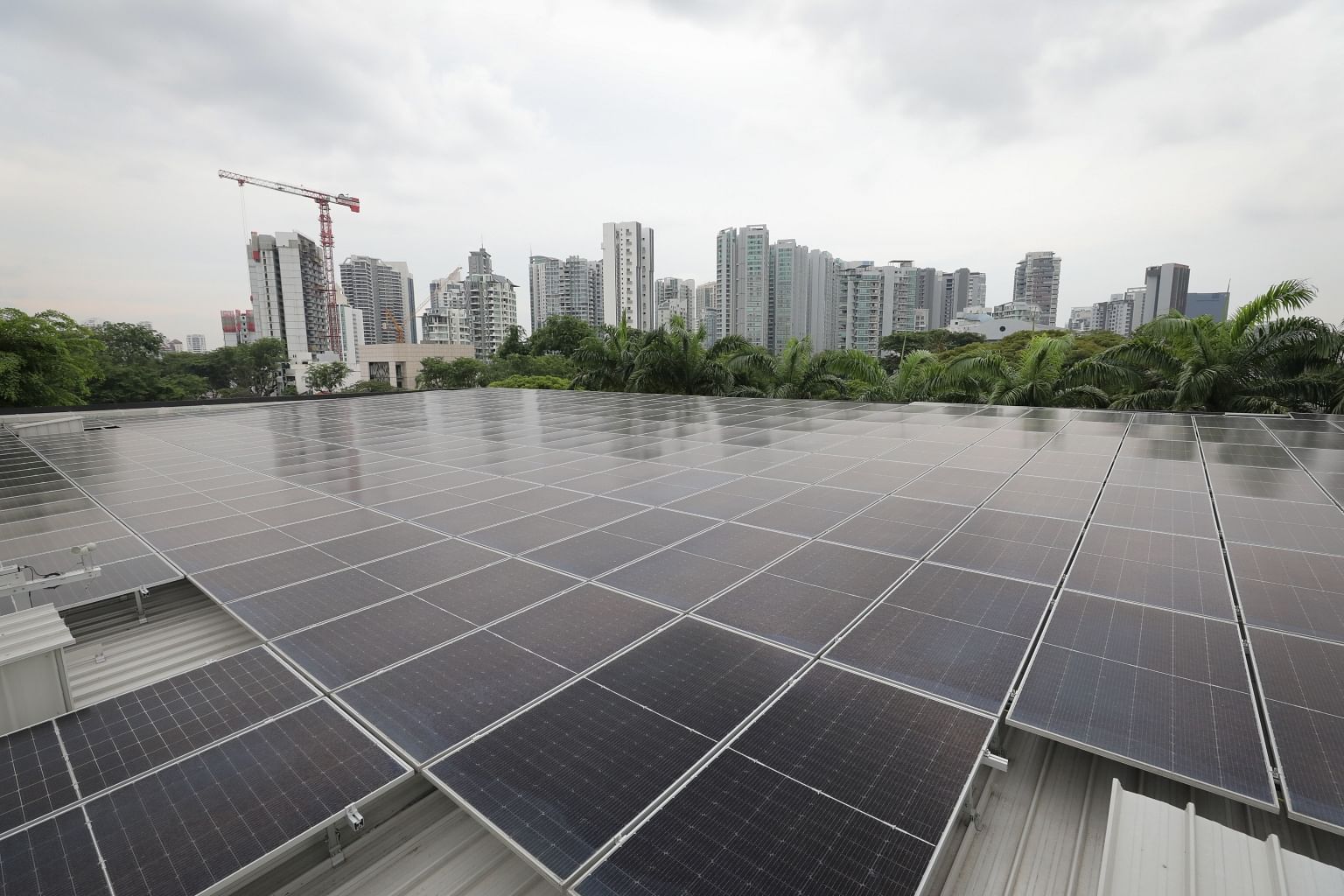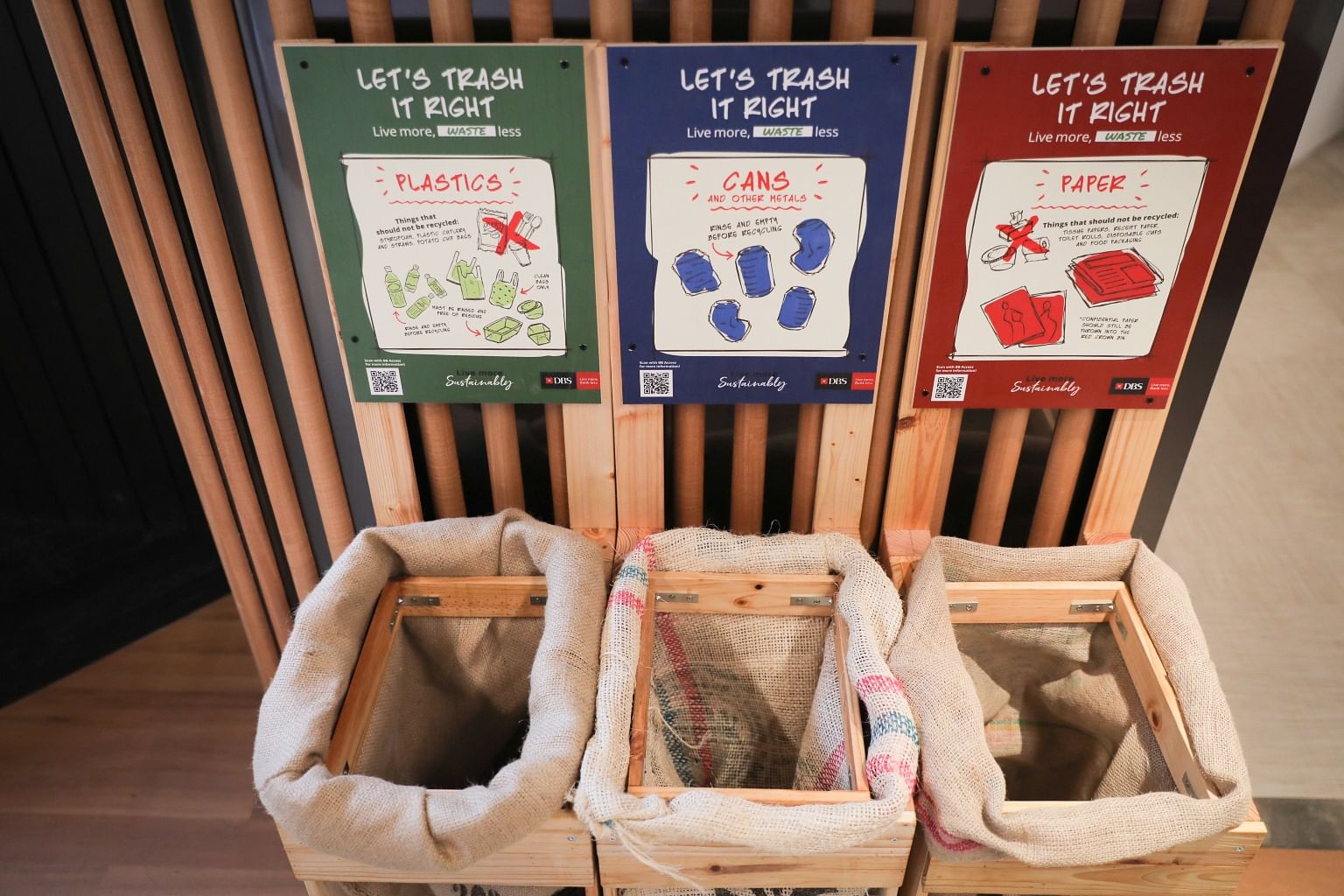Launch of DBS' new net-zero energy building brings Singapore's total to 19
Sign up now: Get ST's newsletters delivered to your inbox

The building has been certified by the Building and Construction Authority as a Green Mark Platinum Zero Energy building.
ST PHOTO: ONG WEE JIN
Follow topic:
SINGAPORE - A new net-zero energy building was launched on Monday (July 18), joining 18 net-zero energy and 35 super low energy buildings, in the Government's push to reduce carbon emissions.
The 30-year-old DBS Newton Green on Bukit Timah Road, which houses over 400 employees, was retrofitted by DBS with green features such as a solar panel roof and low energy appliances.
It has been certified by the Building and Construction Authority (BCA) as a Green Mark Platinum Zero Energy building, which means it produces more energy than it consumes.
National Development Minister Desmond Lee, who opened the building on Monday, said that buildings contribute over 20 per cent of Singapore's carbon emissions.
He added: "Greening our buildings is absolutely crucial to further decarbonise our built environment. The private sector plays an important part in this endeavour."
The move to achieve net-zero energy consumption is in line with the Singapore Green Building Masterplan announced in March last year - to make 80 per cent of Singapore's buildings by gross floor area more sustainable, to have 80 per cent of new buildings classed as super low energy buildings and for best-in-class green buildings to improve energy efficiency by 80 per cent.
According to BCA, as at March this year, close to 7 per cent of new buildings by gross floor area have been certified as super low energy buildings which can achieve energy savings of at least 60 per cent compared to 2005 levels.
In his speech, Mr Lee said the building, with funding from BCA to help integrate green innovations, is expected to recover subsidised retrofitting costs within four years. The total cost of the project is over $5 million.
He also highlighted technology used such as driveways made from an amalgam of unrecyclable plastic and reprocessed asphalt waste instead of asphalt derived from crude oil, as well as a system which adjusts lighting based on where people are in the building.
DBS chief executive Piyush Gupta said the building will be a "living test bed for innovative sustainable technologies".
He added: "While the sustainability challenges before us are manifold, DBS has prioritised climate action due to the sheer urgency of the issue and how it interrelates with other environmental and social concerns."
DBS has pledged to power all its operations in Singapore using renewable energy by 2030. Other organisations such as the National University of Singapore (NUS) have also set sustainability targets for the end of the decade.

NUS campus infrastructure vice-president Koh Yan Leng said it plans to be a carbon-neutral campus by then. So far, it has one positive energy building, two net-zero energy buildings and eight super low energy buildings.
SDE4, a positive energy building located at its School of Design and Environment, can generate about 40 per cent more energy than it consumes, according to the university.
At present, there are four positive energy buildings in Singapore, said the BCA.

One building that became net-zero energy following modifications, Keppel Bay Tower in HarbourFront, has smart features to lower air-conditioning use such as sensors to optimise the building's intake of fresh air and technology to remove sediments in its cooling tower system.
Keppel Land chief executive Louis Lim said: "Sustainability is not a choice, but something that all of us must do for the benefit of the planet."

